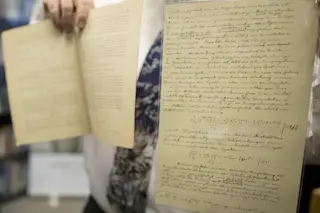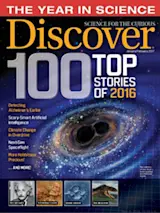Long ago in a galaxy 1.3 billion light-years away, two black holes collided. Each was dozens of times heavier than the sun, and they orbited each other 100 times a second. As the behemoths merged, they also shed a tremendous amount of energy, the equivalent of three times our sun’s mass. That energy radiated away as a gravitational ripple in space and time, which swept across the cosmos until it reached Earth.
The wave first hit the Laser Interferometer Gravitational-wave Observatory (LIGO) in Hanford, Wash., in September 2015. Then, traveling at the speed of light, it hit the twin LIGO facility in Livingston, La., less than 10 milliseconds later.
At both observatories, extremely sensitive laser measurements inside miles-long tunnels caught the waves’ tiny stretches and squeezes of space-time. The disturbance was so small, it would warp the 25 trillion miles to the nearest star system by just the width of ...















